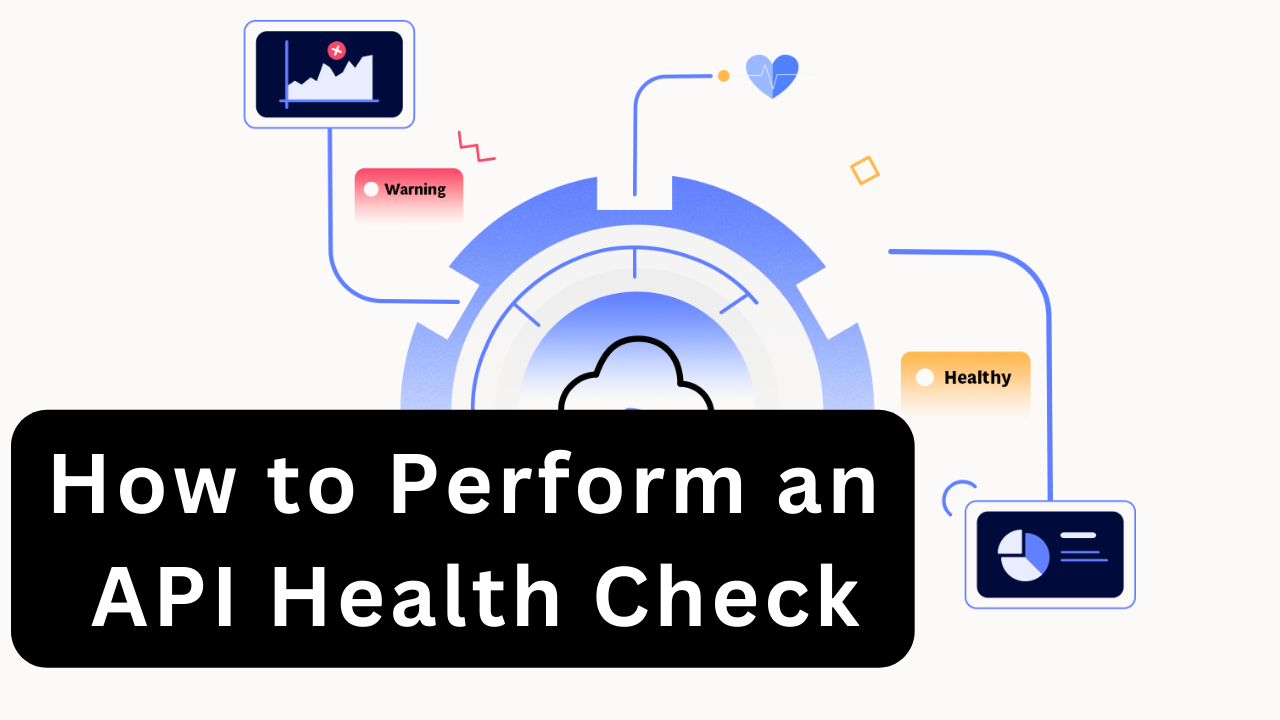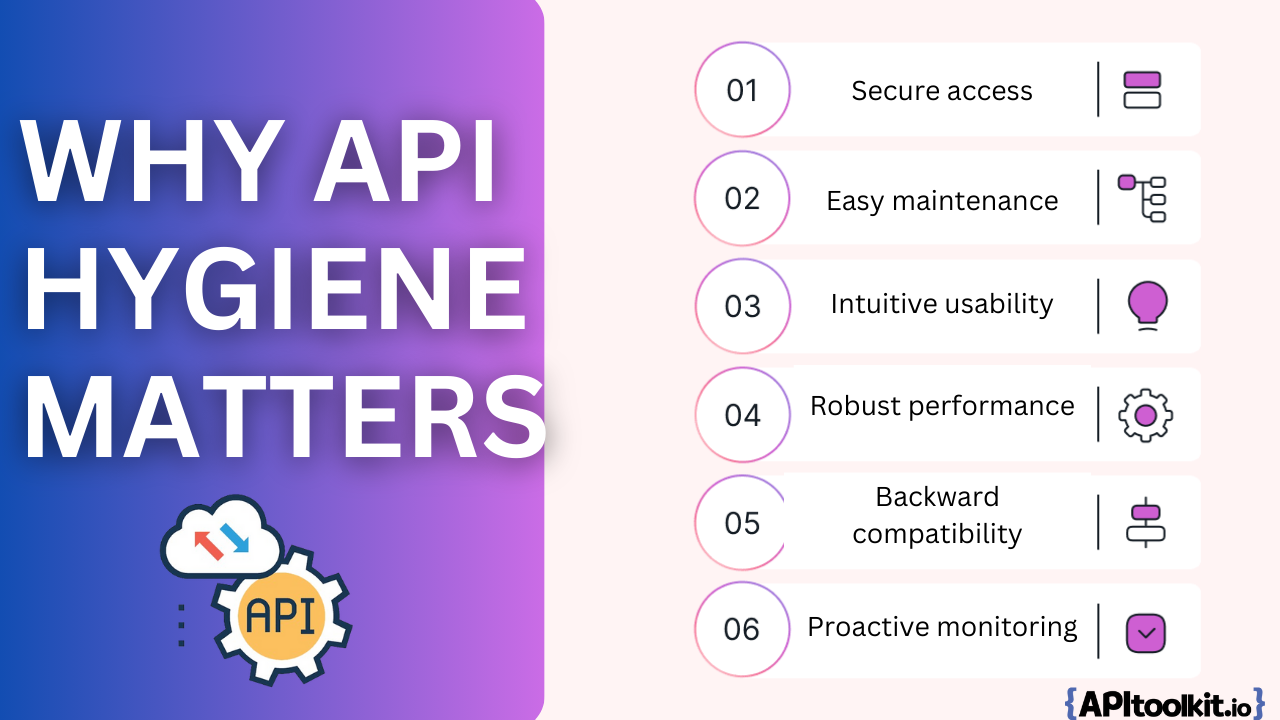How to Perform an API Health Check

APIs are a big part of most software apps today as they form the communications links and bonds between different parts of a software program. They do a lot of key jobs behind the scenes. But even well-built APIs can have problems from time to time. Issues like slowdowns, errors, or downtime can break parts of an app. If APIs are not checked regularly, these issues can create big headaches for users.
Doing regular API health checks is an important best practice to avoid trouble. Think of API health checks as the regular checkups for your application. Just like taking care of your physical health, neglecting your API hygiene can lead to disastrous consequences.
Checking API health gives developers useful information about how APIs are working. It quickly spots any new issues cropping up. Running automated checks on a schedule finds concerns before they mess things up.
With solid API checks in place, developers can be confident their APIs are in good shape. This article explains how to perform API health checks to keep APIs running smoothly. A good health check system is the best way for developers to make sure the APIs at the heart of their apps stay healthy.
Why API Hygiene Matters
API hygiene refers to how well-designed, well-documented, and cleanly functioning an API is. Like dental hygiene for your teeth, API hygiene is essential preventative care for robust API performance.
Poor API hygiene can arise from common impurities like:
- Outdated documentation with wrong info that misleads developers
- Inconsistent data formats that cause integration failures
- Fragile error handling that fails to catch exceptions
- Unoptimized performance that allows slow response times

These API impurities introduce technical debt that erodes overall quality over time. Without constant vigilance, entropy leads to declining hygiene.
For example, lack of documentation updates caused many developers to use a deprecated Twitter API due to outdated online guides. When Twitter shut off the old API with short notice, many applications broke unexpectedly.
Poor error handling at an e-commerce site allowed unpredictable failures when checking out. This resulted in abandoned shopping carts and lost sales until the fragile API was fixed.
Regular API health checks that monitor for impurities like documentation drift, performance regressions, and error handling gaps provide actionable data.
What is an API Health Check? An API health check is a test that evaluates the current functionality and performance of an API. Health checks monitor that an API is running as expected and meeting established standards.
The main purpose of API health checks is to ensure the reliability, stability, and robustness of APIs. Comprehensive health monitoring exposes any weaknesses before they turn into real problems for end users.API health checks achieve this by proactively identifying issues like performance degradation, downtimes, error rates and more. Automated checks at frequent intervals quickly detect anomalies.
API developers can then diagnose root causes and implement fixes and optimizations to restore full health. For example, a daily API health check by APIToolkit will reveal response times creeping upwards over the past week. This performance degradation could indicate impending infrastructure issues.
Fixing the bottleneck before a total outage provides a smoother user experience. Regular health checks shift troubleshooting left, finding weaknesses in the staging environment instead of when they directly impact customers.
Types of API Health Checks
1. Basic Health Checks
Availability Check — This test pings the API endpoint URL and validates that the expected HTTP response code is returned. Common expected codes are 200 OK for a successful response, or 401 Unauthorized for endpoints requiring authentication. Failure to receive the expected response code indicates an issue.
Response Time Check — This test measures the time between sending a request and receiving a response from the API. Tracking this metric over time reveals performance regressions. Sudden spikes in response latency can indicate problems.
Status Code Validation—This check confirms the API returns the correct HTTP status codes for different request scenarios. For example, a 400 Bad Request for a malformed request, or 404 Not Found for a non-existent resource. Validating proper status codes checks that error handling is working correctly.
2. Advanced Health Checks
Database Connectivity—This test validates that the API is able to establish a connection with its database(s) and execute sample queries to retrieve data. Failure to connect or errors when querying signal a concern with the database backend.
External Service Validation — If the API depends on any external services like payment gateways or weather data, additional tests can validate these integrations. For example, submitting an API request that triggers a call to a payment provider and confirming the external service responds correctly.
Resource Utilization — Monitoring memory usage, CPU, network I/O and other server resources can identify performance bottlenecks caused by resource constraints. Spikes may indicate configuration issues to address.
Data Integrity — Comparing the format, schema, and values of API responses against expected baselines verifies data quality. For example, confirming field types, validating formats of identifiers, and checking expected API key usage. This can catch data corruption issues.
How to Perform API Health Checks
Understand the API’s purpose and usage: By understanding the functionality and the potential impact of a failure on the API. This knowledge will guide your health check process.
Review API documentation: The documentation of an API is the best starting point for performing health checks. This documentation will provide insights into the expected API behavior and potential failure points.
Set up automated testing: Utilize tools like Postman, JMeter, or SOAPUI to automate the API health check process. These tools can send HTTP requests to the API endpoint and check the response status and time. Additionally, you can configure the tools to trigger the API health check based on specific conditions.
Monitor API response time: Using an advanced tool like apitoolkit to monitor your api response time is an important aspect of API health check. An increase in response time could indicate issues with the API or the underlying system. To monitor this, set up performance monitoring using tools like apitoolkit, New Relic, or Grafana.
Test error handling and validation: The API should handle different types of errors and validate input data. Perform manual testing to ensure the API handles invalid requests appropriately and returns clear error messages.
Validate data integrity: Verify that the data returned by the API is accurate and consistent. This includes checking for data types, formatting, and required fields.
Perform security testing: Regularly test the API for potential security vulnerabilities, such as SQL injection or cross-site scripting (XSS). Use tools like OWASP ZAP or Burp Suite for this purpose.
Verify API authentication and authorization: Ensure that the API properly authenticates and authorizes requests based on user roles and permissions.
Assess API reliability: Determine the API’s resilience to potential failures, such as system crashes or network issues. Perform simulated testing by causing failures and observing the API’s behavior.
Establish a monitoring and alerting system: In case of API failures, a system should be in place to detect the issue and notify the appropriate personnel. Utilize monitoring tools like Datadog, New Relic, or Prometheus to achieve this.
Schedule recurring health checks: Regularly perform API health checks to maintain the integrity and performance of the API.
Tools and Resources for API Health Checks Apitoolkit- An advanced API monitoring,teasting, and observability platform providing debugging, automated testing, performance monitoring, and more. APIToolkit act as a quality assurance for your API lifecycle. With the engaging community, developers get help easily whenever they get stack.
Postman - A powerful tool that allows you to interact with APIs from the comfort of your own workspace, making it easier to design, share, test, and
Runscope - A dedicated API monitoring tool with test automation, alerting, dashboards, and integration with services like Slack and PagerDuty.
Swagger - An API documentation framework that generates interactive API documentation interfaces from declarations in code comments. Useful for understanding APIs.
New Relic - An observability platform that can monitor API performance via agents and instrumented code. Provides monitoring dashboards and alerting.
API Health Check Best Practices
Automate checks- Manual testing alone is not sustainable long-term. Prioritize setting up automated checks using CI/CD pipelines, scripts, monitoring tools, etc. This allows recurring tests without ongoing engineer effort.
Monitor key metrics - Track key performance indicators (KPIs) like uptime, response time, error rates, resource utilization. Metrics expose potential problems and performance trends.
Validate comprehensively - Move beyond basic ping tests. Validate API functionality, business logic, edge cases, and negative scenarios. Employ simulators to mimic real-world load.
Implement robust error handling - Handle and log errors gracefully. Do not expose stack traces to callers. Use error monitoring tools like Sentry to understand failures.
Check from different regions - Rotate tests across geographic regions to detect localization and CDN issues. APIs should perform consistently globally.
Establish alerting thresholds - Configure alerts like Slack or SMS notifications for metric thresholds that indicate health degradation. Rapid response accelerates diagnosis and remediation.
Document thoroughly - Maintain updated API documentation like OpenAPI Specification so developers understand proper API usage.
Frequently Asked Questions
Why is an API Health Check Necessary? A: API health checks are essential for quickly detecting issues before they cascade into outages. Unhealthy APIs directly impact user experiences and business operations. Proactively monitoring API health with APIToolkit minimizes disruptions and provides warnings to address degradations.
When is the Best Time to Get an API Health Check? A: Ideally health checks should be implemented early during API development and expanded throughout the API lifecycle. Checking health frequently during initial development catches bugs. Ongoing production monitoring surfaces emergent issues over time and use.
How Often Should You Perform an API Health Check A: Most experts recommend scheduling automated API health checks to run continuously at regular intervals like every 5 minutes. Frequent checks allow rapid detection and response. Checks may also be triggered by events like new deployments.
What are the Key Components to Consider in an API Health Check? A: Some key components include: availability, response time, error rate tracking, status code validation, data validation, security posture, resource utilization, integrations. Consider the critical business and technical requirements for the API.
How Can You Automate API Health Checks for Efficient Monitoring? A: Options include integrating checks into CI/CD pipelines, building a scheduled health check script, employing an API monitoring tool, and using standalone system monitoring tools. The method depends on the tech stack and architecture. Automate as much as possible.
Conclusion As APIs continue to proliferate as the technical backbone of applications, prioritizing API health has become a critical practice. Unhealthy APIs directly translate into degraded end user experiences, lost revenue, and other business impacts. Implementing robust API health checks is essential for any organization relying on APIs in a production environment. With a rigorous health check methodology in place, your engineering teams can be confident that their APIs are running smoothly and reaching their full potential.
Keep Reading
Incident Management: How to Resolve API Downtime Issues Before It Escalates
How to Generate Automated API Documentation
A Guide to Embedded API Logs and Metrics